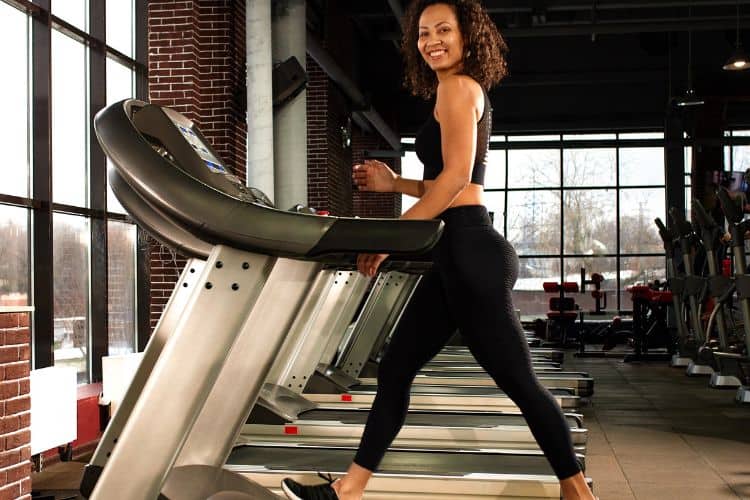Sign up for workout ideas, training advice, reviews of the latest gear and more.






Walking may seem simple, but when you step onto the treadmill with a strategic routine, it becomes one of the most powerful tools for fat loss, endurance, cardiovascular health, and overall fitness. A 30-minute treadmill walking workout routine is the ideal balance of time efficiency and effectiveness, giving you a structured way to burn calories, strengthen your lower body, boost heart health, and improve mood—without the stress or impact of running. Whether you’re a beginner easing into fitness, someone returning after a break, or a seasoned exerciser wanting a productive active recovery workout, this structured plan provides everything you need to move with purpose.
This comprehensive guide breaks down the benefits of treadmill walking, what to expect from a 30-minute walking workout, how to adjust speed and incline, proper forms tips, safety guidelines, a detailed minute-by-minute routine, and ways to progress over time. If you’re looking for a workout that is simple, effective, and incredibly sustainable, this treadmill walking routine is the perfect addition to your weekly fitness plan.
A well-structured treadmill walking workout is far more powerful than most people realize. When combined with strategic incline changes and pace variations, walking transitions into a full-body workout that boosts calorie burn, enhances cardiovascular health, and builds muscular endurance.
Walking is also one of the most accessible forms of exercise. It requires no special skills, protects your joints from high-impact stress, and works well for all ages and fitness levels. A 30-minute duration is long enough to trigger meaningful physiological changes—such as elevated heart rate, improved circulation, and lower stress hormones—while being short enough to fit into busy schedules.
Additionally, treadmill walking allows you to control every variable: speed, incline, intervals, and duration. This consistency and predictability help you push yourself safely while keeping each session productive.
Walking regularly provides an impressive list of physical and mental health benefits. Even at low to moderate intensities, it can create powerful improvements in short and long-term well-being.
Walking at an incline increases muscle activation in the glutes, hamstrings, and calves, helping your body use more energy per step. A structured 30-minute routine can burn anywhere from 150–300+ calories, depending on intensity and incline levels.
Walking elevates your heart rate in a safe and controlled manner. Over time, this improves:
This makes walking an excellent entry point for anyone wanting to improve endurance.
Incline walking especially targets:
These muscles play a key role in posture, movement efficiency, and injury prevention.
Just 30 minutes of walking can reduce stress, clear mental fog, elevate mood, and release feel-good endorphins. Treadmill sessions can also offer calm, uninterrupted “me-time.”
Walking is gentle on your knees, ankles, and hips—making it the perfect option for beginners, seniors, individuals recovering from injury, or anyone who prefers joint-friendly training.
This workout is designed for all fitness levels, with built-in incline and speed variations to keep your heart rate up and muscles engaged without overwhelming your joints.
You can expect:
By manipulating incline, you maximize calorie burn—even at slower speeds—allowing your body to work smarter, not harder.
The workout includes recommended speeds and inclines, but feel free to adjust them based on your treadmill’s capabilities or personal comfort level.
Walking seems simple, but proper technique can help you walk faster, burn more calories, and prevent discomfort.
Using good form means you’ll perform the workout safely and efficiently while maximizing results.
Because treadmill workouts involve moving surfaces and variable speeds, safety should always come first.
These habits create a safer and more enjoyable treadmill experience every time you train.
A low-impact, fat-burning walking routine for beginners and intermediate users
This routine alternates between flat, moderate incline, and high incline sections while keeping the speed at a comfortable walking pace. You’ll gradually intensify the workout, peak at a challenging incline, and then ease into a relaxing cool-down.
Speed: 2.5–3.0 mph
Incline: 0%
Begin by easing into your movement. This warm-up prepares your joints, activates lower-body muscles, and elevates your heart rate gradually. Maintain a steady pace that feels comfortable but purposeful. Focus on deep breathing, tall posture, and a smooth stride.
Speed: 3.0–3.4 mph
Incline: 0%
Pick up the pace slightly while maintaining flat terrain. This segment increases blood flow to the legs and warms the muscles for upcoming incline challenges. Keep your core engaged and your arms active.
Speed: 3.0–3.4 mph
Incline: 3%–5%
This incline engages your glutes, legs, and calves while raising your heart rate. You should feel like you’re working but still able to hold a light conversation. If you’re more advanced, increase incline toward the higher end of the range.
Speed: 2.8–3.2 mph
Incline: 6%–10%
This is the most intense portion of the workout. A higher incline significantly increases calorie burn and muscle activation. Keep your stride controlled, breathe steadily, and avoid leaning too far forward. Lower incline if you feel overly fatigued.
Repeat the following 1-minute intervals:
This section keeps your heart rate elevated with varying intensities that challenge the body without overwhelming it. Intervals are excellent for boosting metabolism and keeping workouts engaging.
Speed: 2.5–2.8 mph
Incline: 0%
Lower your pace and incline to allow your heart rate to return to normal gradually. Focus on long, deep breaths, keeping your posture upright. Use this time to reflect on the workout and enjoy the satisfaction of completing a powerful 30-minute routine.
Every fitness level can benefit from this workout because it offers endless room for customization.
These adjustments help you progress and keep your workouts exciting.
Here’s how you can incorporate this walk into a weekly routine:
This balanced schedule builds endurance, strength, and mobility while preventing burnout.
Aim for at least 3 walking workouts per week.
Even a 1% incline significantly increases calorie burn.
Monitor changes in speed, incline, or duration.
Adjust intensity based on energy levels and comfort.
Proper hydration improves performance and recovery.
Keep your workout enjoyable and mentally engaging.
Most people burn 150–300 calories, depending on speed, incline, and body weight.
Yes! Treadmills allow more control over speed and incline, which can enhance calorie burn.
Absolutely. While spot-reduction isn’t possible, walking boosts your overall calorie burn, which reduces total body fat—including belly fat.
Incline walking burns a surprising amount of calories while putting less stress on your joints.
A 30-minute treadmill walking workout routine is one of the most accessible, effective, and sustainable forms of exercise. Whether you’re starting your fitness journey or looking for a low-impact way to stay consistent, this structured walking plan helps you burn fat, tone your legs, strengthen your heart, and boost energy—without the need for running or high-intensity intervals.
If you perform this routine consistently, you’ll notice improvements in endurance, posture, leg strength, and overall daily energy. Walking truly is one of the simplest ways to transform your health.
If you’re looking to maximize your treadmill time, check out our 30-minute walking routine along with complementary resources at Women’s Fit Club for even better results. For a shorter cardio blast, see our article on the Ultimate 10-Minute Treadmill Workout for a Quick Effective Burn. If incline walking is your preference, dive into Incline Walking for Fat Loss – A Game-Changer for Women to understand why it works so well. For low-impact options or recovery days, don’t miss The Best Low-Impact Exercise Workouts for Women that include walking and treadmill modifications. To build a more rounded fitness habit, our guide on Gym Routine for Women Beginners – A Complete Guide offers strength, cardio and flexibility tips. Finally, for nutritional support alongside your workouts, explore How to Stay Consistent with Your Diet: 15 Proven Tips for Success to help fuel your progress.
Stay up to date on the latest women’s health, fitness and lifestyle trends and tips.